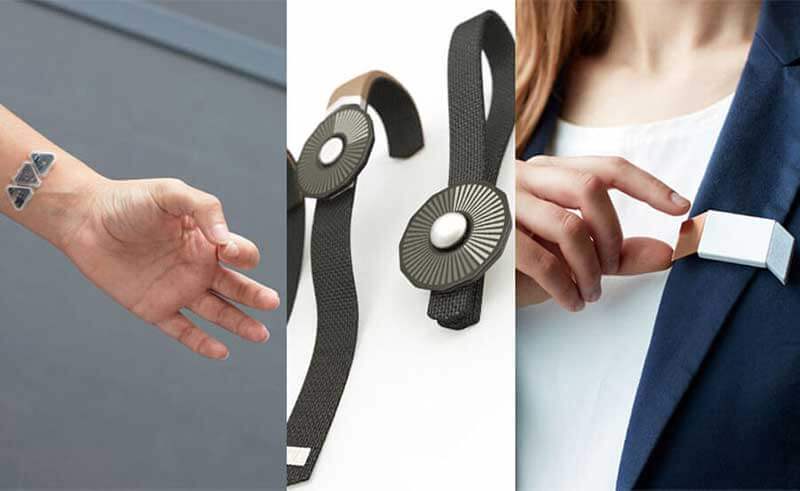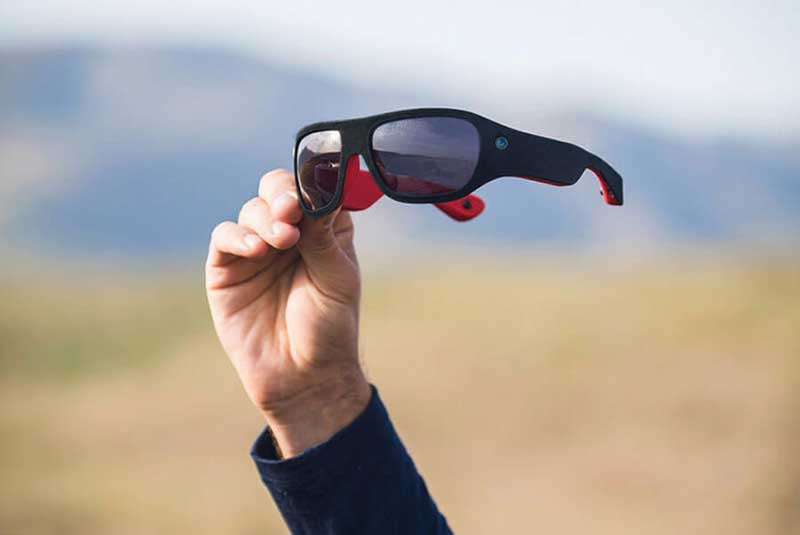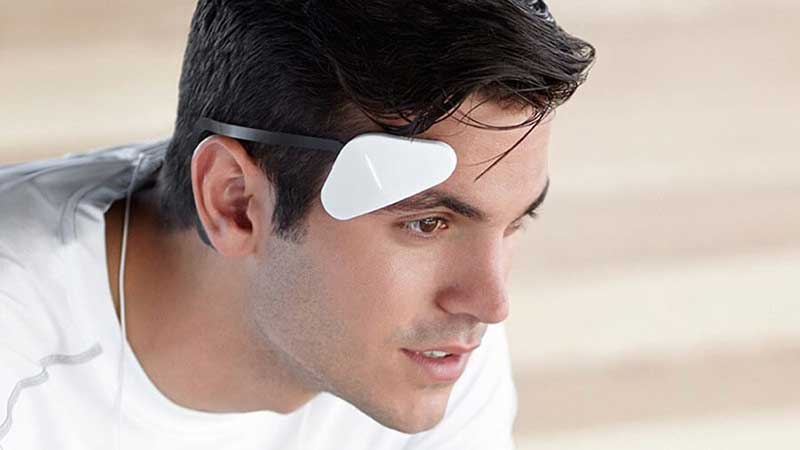- Budgeteer wrist wearable tracks how much you spend
- Are the ORBI Prime action camera-fitted sunglasses the new GoPro?
- Kokoon headphones wake you at the perfect time
- Thync shifts your mental state through neurosignalling
- Oakley’s Radar Pace smart glasses for stronger runners and cyclists
- Thread payment wearable turns the street into a real live Pinterest board
Over the past two or so years, wearable technology has hit the mainstream, with the hottest devices now worn on our arms, faces and wrists, around our neck, on our clothing, in our jewellery or even implanted under our skin. When we talk about wearable tech, we think digital watches, fitness trackers and funky headphones. But the new wearables are much more than that. They are teeming with sensors and use the Internet or Bluetooth to connect with other devices. Most wearables help us to stay fit, monitor our health, lose weight, or make us more organised. The new generation wearables helps us sleep, enhances our hearing, helps us with budgeting and even gives us more energy. There are many new and innovative concepts and products from engineers, healthcare professionals and entrepreneurs and the next couple of years will see a true wearables revolution.
Here’s seven of the latest and most exciting wearables:
1.Budgeteer wrist wearable tracks how much you spend
In September last year, Visa Europe teamed up with Central Saint Martins, renowned art and design institution, in a bid to challenge design students to create a wearable payment device that combines practicality with aesthetics. Visa Europe announced that within the next few years, payment terminals in Europe will become widely compatible with contactless tech in most retail outlets. One of the designs presented was the Budgeteer, a wrist wearable that tracks how much you spend and what you spend it on. When the user makes a payment, he can make one of three different hand gestures to allocate the spend to a category such as ‘work’, ‘me’ or ‘home’, much like the way we used divide physical money into categories. Using discrete hand gestures, the user can also switch between accounts or cards which eliminates the need for mental gymnastics or having to log into banking apps when making a payment at the checkout counter.

2. Are the ORBI Prime action camera-fitted sunglasses the new GoPro?
Although the camera space is still being dominated by GoPro, ORBI’s wearable action camera is just a little more, well, wearable, although they don’t record at quite the same quality as the latest GoPro. They are designed to look like normal sunglasses but are fitted with four fully HD cameras that can shoot 360-degree images and video. Fully charged, the device enables the user to capture approximately 90 minutes of video. The Prime 360 capture glasses with their polycarbonate frame are specifically designed for outdoor use, although its waterproof resistance feature is not solid enough to make them safe for swimming or diving.

3.Kokoon headphones wake you at the perfect time
Our days and nights are filled with noise and it is almost impossible to escape it but with the Kokoon wireless headphones you can. Whether you need a little help concentrating while studying or whether you want to just zone out during your commute or focus at work, the Kokoon headphones allow you create the perfect sanctuary in which you can withdraw. The headphones are comfortable enough to sleep in as the unique, soft FLexMould material moulds to the shape of your head. Fitted with the latest sleep-audio technology, Kokoon adapts to your environment. It responds to the sounds around you and learns what helps you relax and drift off to sleep. It even monitors you while you are in slumber land. The headphones are fitted with EEG brainwave sensing technology, giving you real-time audio optimisation as well as valuable insights. Towards the end of the night, Kokoon finds the lightest point in your sleep cycle, during which it helps you to wake up. This way you feel well-rested and refreshed to start your day.
4. Thync shifts your mental state through neurosignalling
Thync is an effective, safe and aesthetically pleasing new lifestyle wearable that promises to shift your mental state within minutes. Its use is said to resemble the effects of a Red Bull or an espresso and lasts up to several hours. Thync uses a process called neurosignalling, which brings together the latest advances in engineering and neuroscience. The Thync is able to alter your mental state by giving you a type of neurological jolt that makes you either calmer or more energetic, without having to resort to alcohol or pills. The technology is unlike any other wearable tech. It’s not a monitor, nor is it a tracker. The device works with your own natural ability to energise or relax and it does so by stimulating nerves on your neck or head. The device’s ‘energy vibes’ provide the refreshing and invigorating sensation of a cool splash of water, while the ‘calm vibes’ resemble the relaxing sensation of a massage. By using the Thync 3-5 times a week, the device is said to help balance stress, improve sleep and manage energy levels. Thync is a safe and uncomplicated lifestyle product which has been exempted by the FDA.

5. Oakley’s Radar Pace smart glasses for stronger runners and cyclists
Oakley’s Radar Pace smart glasses include removable earphones that are integrated into the frames. Besides microphones, these earphones also incorporate a host of sensors such as a gyroscope, accelerometer, proximity and humidity sensors and a barometer. Unlike for instance Google Glass, the Pace doesn’t make use of an AR overlay on top of the vision of the user. Instead, the manufacturers were of the opinion that audio would be the preferred method to send information across. This way, nothing interferes with the runner’s or cyclist’s stride or form. Pace enables the user to interact with Google Voice or Siri and access real-time coaching and fitness information. It can give you advice on increasing or decreasing your pace and monitors vitals such as your heart rate. The glasses can also be paired with other tech such as foot pods, power metres as well as speed and cadence sensors. Not only does this increase your data feedback, it also highlights the intended use of the glasses for running as well as cycling. Of course Pace also enables you to take calls and play music from your smartphone.
6. Bragi Dash futuristic hearable
The Bragi Dash futuristic Bluetooth earbuds are said to be the first truly wireless earphones in the world. The Dash has 4GB of internal storage so you can listen to all your favourite tracks without having to use any other device. You can take calls by nodding ‘yes’ and decline them by shaking ‘no’. With gesture control you can manoeuvre through the world of augmented reality in your ears or you can tap and swipe on the earbuds themselves. The audio pauses when you take the earbuds out and continues where you left off as soon as you put them back in. But the Dash is not just for music, it’s also a discrete fitness & health tracker and a personal assistant. Given the fact that our ears provide a much more precise spot from which to monitor health statistics than our wrists, the wearable has been dubbed the ‘hearable’. With its 23 embedded sensors, the Dash is a health aid, a fitness coach and a digital assistant all rolled into one. The hearable has a built-in microphone and an audio transparency mode which enables you to hear the sounds around you such as when someone speaks to you, even when listening to music. The Dash’s oyster-shell case serves as the earbuds’ home as well as their charger.
7.Thread payment wearable turns the street into a real life Pinterest board
The Thread is another concept design that came out of the Visa Europe–Central Saint Martins collaboration to create a wearable payment device combining practicality and aesthetics. The Thread is a contactless payment brooch, aimed at the fashion conscious and bringing together a number of modules to address various challenges. One of the wearable’s modules is the biometric scanner that reads your finger vein for identification and enables you to make payments. The brooch also keeps tabs on what you buy and where you buy it. Outside of the store, admirers of your fashion style and fellow wearers of the brooch can scan your Thread device with their smartphone camera and AR app to find out where you bought your outfit. The admirer can then rate your clothes, the clothing brand as well as your sense of style, basically turning the streets into a real live Pinterest board and catwalk. The wearable offers fashion brands lots of value because for them, each moment is a marketing opportunity. The user benefits from it by accruing loyalty points and credits or receiving VIP tickets to fashion launch events and special offers or discounts, each time their clothes are checked out or rated.
What’s on the horizon?
Although the wearables space is looking very promising, up until now, many consumers have found that their devices sometimes tend to come up short. Their main complaints are about form, accuracy and pricing. Wearables have actually seen a 30% return rate with products being abandoned after only six months. In order for the new generation of wearables to be really useful, consumers expect them to become more inconspicuous, accurate and personalised.
Within the next ten years, we might see a world in which we’ll put on a favourite pair of jeans instead of a smartwatch to track our vital statistics. The buttons on those jeans could gather data from our bodies and get their power from the ambient environment. Our favourite ring could communicate with everything else around us and tell us when and what to eat and drink, what’s the best time to sleep, when we should take a break and when to get more exercise. Even though it’s a little early to predict specific form factors or features that will prevail in the next few years, wearable technology is an increasingly interesting field to study. Computing has never before been small enough to be continuously worn on the body and the recent developments are presenting us with exciting opportunities in many fields and industries. With the innovations discussed in this article on the horizon, we’re getting closer to developing increasingly useful and desirable consumer products.
Share via:



